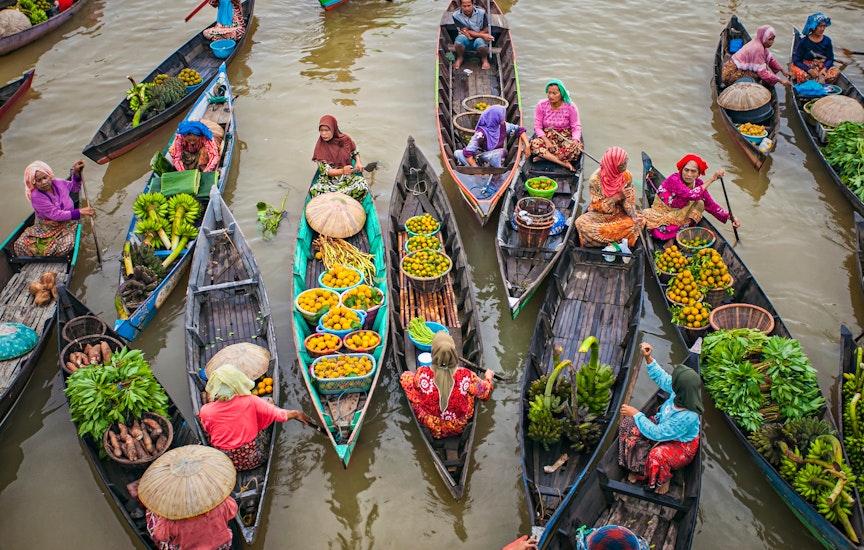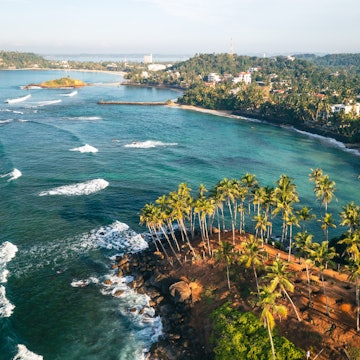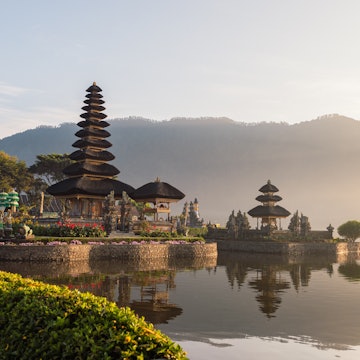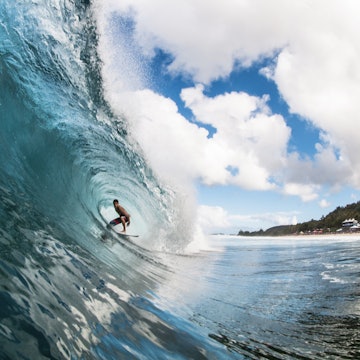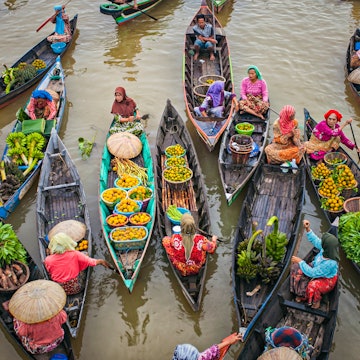
14 free things to do in Bali for paradise without the price tag


The price of a drink is the only charge for watching the sunset from a Bali beach bar © AsiaTravel / Shutterstock
Bali has long been known as Indonesia's favorite party place, but this tropical island offers layer after layer of rich diversity and unspoiled charm for travelers who want to hunt down unexpected experiences. Best of all, many of Bali's best experiences come free of charge.
If you know where to look, a vacation on the Island of the Gods can be one of Asia's best-value holidays. You can enjoy many of Bali's top activities without spending a single rupiah, and free things to do are often the most authentic experiences on the island.
From watching traditional craftsmanship in action to perusing vibrant local markets, here is our pick of the best free things to do in Bali.
Watch a religious ceremony
The Balinese Pawukon calendar is divided into six months, but it lasts 210 days when measured using the Western calendar. As a result, every Hindu temple in Bali – from the hundreds of major temples to the many thousands of small family temples – celebrates its odalan (birthday) twice a year. Your trip is certain to coincide with several of these temple celebrations – and there's rarely an entry fee to observe, except at Bali's top tier of temples. With Bali's famous hospitality, if you simply ask around and express an interest, an invitation is likely to be forthcoming.
Likewise, the major festivals of Galungan and Kuningan (often described as Balinese Christmas) also fall twice in the same year, and never-ending archways of penjors (decorated bamboo poles) make the world's most beautiful island even more stunning. Then there's Nyepi, the famous "Day of Silence," which brings the entire island to a screeching halt. It's a unique privilege to enjoy the raucous ceremony on the eve of Nyepi, as well as the restful day of quiet that follows.
Walk Bali’s wildest beach
Walking westwards along Yeh Leh beach in West Bali, you'll be greeted by breathtaking views of five of Java’s spectacular volcanoes. This 10km (6 mile) stretch of wild black sand could be the most unspoiled beach on the entire island, and it can be walked in three or four hours. You’re unlikely to see many people on the stretch between the surf spot known as “Truck Stop” and Pekutatan, though young men race their mopeds on the beach near Pekutatan on Sunday afternoons.
To hike the whole strip, you’ll have to cross two rivers, but they are less than knee-deep at low tide. If the tide is high or the rivers are in flood, just turn inland at Pekutatan and walk the last 3km (1.9 miles) via the Pulukan rice paddies.
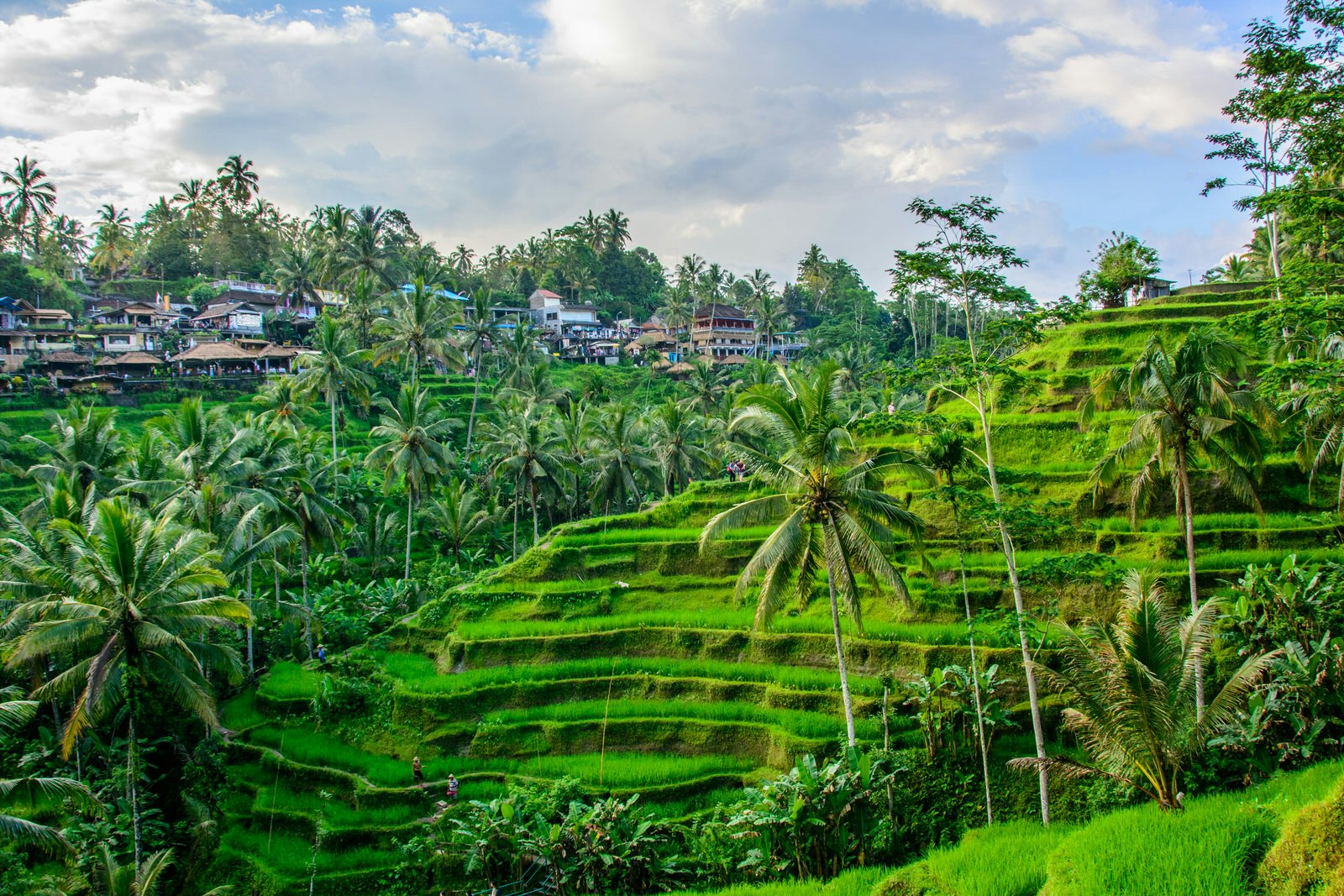
Explore Tegallalang's rice terraces
A 20-minute drive north of Ubud, the valley of Tegallalang is home to some of the island’s most picturesque rice terraces. Here you can see Bali’s ancient, Unesco-listed subak irrigation system in action, with small streams and gullies running to the terraces from pretty puras (temples), showcasing the strong connection between religion, community and nature on the island. Take in the spectacular scenery from one of the roadside warungs (small restaurants) or spend an hour or so exploring this unique landscape on foot. Tegallalang's proximity to Ubud ensures large crowds at sunset, and an almost impenetrable barricade of viewpoint cafes and warungs has sprung up along the roadside, effectively blocking the paddies from view. To trek through more expansive and quieter paddy landscapes, head to Jatiluwih or Soka beach (both near Tabanan).
See island artisans at work
Bali is well known for its skilled craftspeople, who work their magic in studios or small family workshops, producing everything from wooden deity sculptures and masks to batiks. With different villages specializing in a particular craft, it’s just a matter of deciding what art form piques your interest. Head to Celuk to see silversmiths cut and file intricate pieces of jewelry, or visit Mas to be wowed by enormous and ornate wood carvings and colorful stacks of decorative masks.
Visit Bali’s unique terracotta village
Pejatan village lies hidden in the paddy fields, halfway between Canggu and the island’s relatively unexplored “Wild West.” Visitors who pass through will come across an entire community that thrives on producing the red terracotta tiles that crown houses and temples all over the island.
These are family-run businesses, and multiple generations chip in to collect the clay from a nearby riverbed, press it by hand and fire it in venerable old kilns that are heated with mountains of coconut husks. The terracotta village is just 5km (3 miles) from the famous Pura Tanah Lot temple but it's almost unknown to outsiders.
There is no charge for visiting, and there are no official guides in the village, but hospitable villagers – the “terracotta warriors” who produce up to 1000 handmade tiles in a morning’s work – are often happy to show visitors the production line for a cottage industry that goes back generations.

Visit Pura Taman Saraswati Temple
Many of Bali's top temples charge an entry fee, but Pura Taman Saraswati, fronted by a stunning lotus-filled pond, is free to explore. Located behind Café Lotus in central Ubud, this picturesque water temple, built in traditional Balinese style in 1952, can be accessed via a stone walkway decorated with Hindu sculptures. Once inside the inner sanctum, look out for sandstone bas reliefs of Saraswati, the Hindu goddess of learning, literature and art, the temple's patron deity. Inquire locally about evening dance performances, which are staged here regularly.
Admire a colorful traditional fishing fleet
Travelers to off-the-beaten-track West Bali are often stunned to come across a sight that, were it located in a more heavily touristed part of the island, would be considered one of Indonesia’s greatest treasures. The inlet known as Perancak, just south of Negara town, acts as a mooring point for some 150 lavishly decorated traditional Balinese fishing boats.
Every single one of these vessels is a floating work of art – brightly painted, ornately carved and vibrantly decorated. These boats, called selerek, are some of the world’s most spectacular traditional fishing craft, transforming the inlet into a floating art gallery. This unique tradition of boatmaking originally came to Bali with Madurese immigrants (from an island off the north of Java), but these boats are now rarely seen outside of this stretch of coast.

Meet Barack Obama (the puppet version)
Housed in a series of pretty Balinese and Javanese wooden buildings in Mas, on the outskirts of Ubud, the Setia Darma House of Masks and Puppets showcases around 7000 masks and puppets from Indonesia, China, Latin America, Europe and Africa. There's no entry fee, but a donation is welcomed. Highlights of the collection include a number of beautiful wayang kulit Indonesian shadow puppets and some intricately detailed Sicilian stick puppets that date back to the 16th century. Don’t leave without checking out the impressively lifelike puppet of Barack Obama.
Not far from Setia Darma, you'll find the Astina Mask Gallery and Workshop (ask anyone in Mas for directions). This is the renowned workshop of Ida Bagus Anom Suryawan, the youngest member of a mask-making dynasty spanning several generations. The master craftsman enjoys explaining the intricacies of his art, so try and speak to him when you visit (you can also sign up for mask-making classes).

Walk the Campuhan Ridge
Just a five-minute drive from the center of Ubud, Campuhan Ridge stands a world apart from the restaurants and boutiques of nearby Monkey Forest Road. Running for around 6km (3.7 miles), this walking track starts as a narrow trail by the Pura Gunung Lebah temple before widening to reveal a breathtaking valley.
After around 30 minutes of walking along the ridge, you'll reach the village of Bangkiang Sidem, which serves up bucolic scenes of rural Balinese life. It's best to attempt the walk early in the morning or late in the afternoon, when it’s not so hot.
Drive the Ogoh-ogoh Monster Highway
Every year, usually in March, Bali closes down for Nyepi, the famous "day of silence" when all transportation and most activities on the island cease for 24 hours. But the night before Nyepi is one of Bali's greatest free spectacles. Wire, bamboo and paper models of monsters known as ogoh-ogoh are paraded around the island to summon demons, who will afterward be thwarted by the silence of an island that appears to be uninhabited.
Before midnight, most of these paper monsters are burned or otherwise destroyed, but the people who live along Jalan Raya Tampaksiring northeast of Ubud have broken with this tradition and leave the best of their ogoh-ogoh on display. Often known as Bali’s “Monster Highway”, the route makes for a startling drive and a wonderful photo opportunity.

Chill out on Bali's spectacular beaches
One of the best free experiences in Bali is basking in the sun on one of Bali’s dreamy beaches. The powdery white sands of Kuta and Seminyak are the heart of the island’s tourist scene, complete with luxury resorts, restaurants and beach clubs mere feet from the shore.
Meanwhile, Echo Beach in Canggu is one of Bali’s trendiest surf hangouts. Grab a sun lounger and watch surfers take on the island’s legendary breakers, or grab your board and join them. Those looking for an off-the-beaten-path slice of seaside should check out palm-fringed White Sand Beach in Padangbai or Bingin Beach on the Bukit Peninsula.
The 12 most beautiful beaches in Bali
Watch egrets filling the sunset at Petulu
The village of Petulu lies less than 3km (1.8 miles) north of Ubud as the crow flies, but it's not crows you’re likely to see here, but the phenomenal spectacle of up to 20,000 brilliant white egrets, flying in startling V-formations as they head back to their roosts in trees around the village.
Often erroneously described as herons, these cattle egrets are often spotted riding on the backs of cows and buffalo all over the island. You can reach Petulu via a pleasant walk through the paddies from Ubud, but you'll probably want to stay until darkness falls, so arrange for transport to get back to your accommodations.
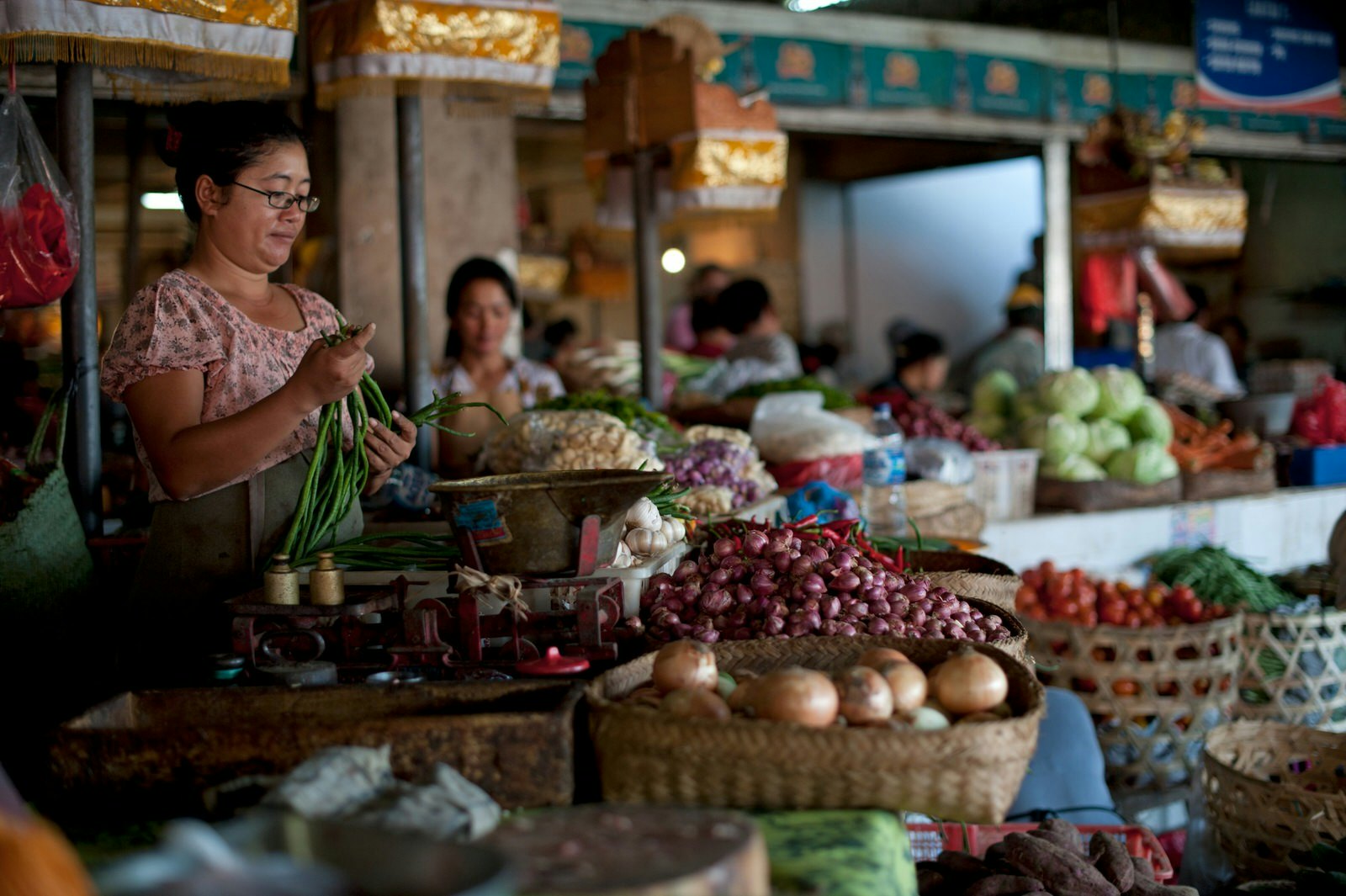
Get a taste of Bali's local markets
Another fun and free Bali experience is immersing yourself in the sights, smells and sounds of one of Bali’s ubiquitous markets. Strolling from stall to stall, you can check out exotic produce, colorful arts and crafts, and all sorts of delectable dishes from across the Indonesian archipelago – you might even get a free sample. Pasar Sindhu Night Market and Kuta Night Market are both popular options for an evening of sensory delights.
Ubud's Central Market sees large numbers of tourists, but walk directly past the little temple at the eastern edge of the market (where stallholders make offerings) and under the archway to find steps leading down to a more authentic fruit, vegetable and spice market. Few tour groups come here, and you can find religious offerings amongst the eatables. For something messy, noisy and fascinating, head to Jimbaran's early morning fish market.
Appreciate the miniature art of I Wayan Gama Painting School
The Keliki Painting School was started in the 1970s by a Balinese farmer to preserve what must surely be one of the most intricate painting styles in the world. Works are produced in extreme miniature and it can take several months for an artist to complete a piece of art that is no bigger than a saucer. This traditional artform was almost abandoned, but in 2005, local painter I Wayan Gama set up a painting school for children at his home in Keliki village. There is no charge to visit, and Wayan Gama will happily show you around the art school and the orchard at the back of the compound.
Time your visit either for weekends or weekday afternoons when the students are out of school and free to practice an artform that certainly needs young, clear eyes. According to the school's founder, few people over 40 have good enough eyesight to produce such intricate work. Your donations (or a purchase) will be gratefully received – funds go to maintaining the school and supporting local families.
You might also like:
See a calmer side to Bali in winter (and other top times to visit)
Bali's best road trips: surf beaches, temples and everything in between
Essential Bali travel tips: what to know before you go





